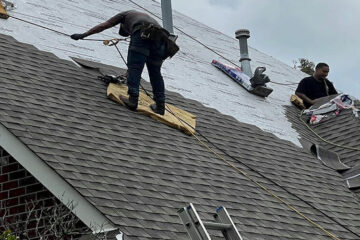In the modern world, securing your property has never been more crucial. Closed-Circuit Television (CCTV) cameras offer a robust solution for monitoring and safeguarding your home or business. This guide will provide you with a thorough understanding of CCTV cameras, their installation, and the benefits they offer.
What is a CCTV Camera?
Closed-Circuit Television (CCTV) cameras are surveillance devices used to monitor and record activities in a specific area. Unlike public broadcast television, CCTV cameras transmit video signals to a limited set of monitors and recording devices.
Key Features of CCTV Cameras
- Real-Time Monitoring: Provides live footage of monitored areas.
- Recording Capability: Stores video footage for future reference.
- Remote Access: Allows viewing of footage from remote locations via the internet.
- Variety of Types: Includes different camera types tailored to specific needs.
Types of CCTV Cameras
Selecting the right type of CCTV Camera And Installation is essential for effective surveillance. Here’s an overview of the main types of CCTV cameras:
1. Dome Cameras
Dome cameras are compact and often used for indoor surveillance. Their discreet design and wide-angle lens make them ideal for monitoring large areas without drawing attention. The camera’s shape also makes it difficult for individuals to discern its direction.
2. Bullet Cameras
Bullet cameras have a cylindrical shape and are commonly used for outdoor surveillance. They are weather-resistant and designed to capture clear footage of specific areas. Bullet cameras are ideal for monitoring entry points and parking lots.
3. PTZ Cameras (Pan-Tilt-Zoom)
PTZ cameras offer the flexibility to pan, tilt, and zoom, allowing you to adjust the camera’s view remotely. These cameras are ideal for large areas where comprehensive coverage is needed. They are often used in commercial settings and high-security environments.
4. IP Cameras
Internet Protocol (IP) cameras use internet connectivity to transmit video data. They offer high-resolution footage and the ability to integrate with other security systems. IP cameras are suitable for both indoor and outdoor use and provide remote access to live and recorded video.
5. Wireless Cameras
Wireless cameras connect to your network without the need for cables, offering flexibility in installation. They are ideal for locations where running cables is impractical. However, they require a stable Wi-Fi connection for reliable performance.
6. Hidden Cameras
Hidden cameras, also known as covert cameras, are designed to blend into their surroundings, making them less noticeable. They are used for discreet surveillance and can be disguised as everyday objects like smoke detectors or alarm clocks.
Benefits of CCTV Camera Systems
Installing a CCTV camera system provides numerous advantages for enhancing security and monitoring your property.
1. Deterrence of Crime
The presence of CCTV cameras can deter potential criminals from targeting your property. Knowing they are being recorded reduces the likelihood of theft, vandalism, and other criminal activities.
2. Evidence Collection
CCTV cameras provide valuable evidence in the event of a crime. High-quality footage can assist in identifying suspects, understanding the sequence of events, and supporting legal proceedings.
3. Remote Monitoring
Modern CCTV systems allow for remote monitoring via smartphones, tablets, or computers. This feature enables you to keep an eye on your property from anywhere, offering real-time updates and alerts.
4. Improved Safety
CCTV cameras enhance safety by monitoring potential hazards and ensuring compliance with safety protocols. This is particularly important in workplaces, public areas, and homes.
5. Insurance Benefits
Having a CCTV system can potentially reduce insurance premiums. Insurance companies may offer discounts for properties with active surveillance systems due to the decreased risk of loss or damage.
How to Choose the Right CCTV Camera System
Selecting the right CCTV camera system involves evaluating various factors to ensure it meets your security needs effectively.
1. Assess Your Security Needs
Identify the areas you need to monitor and the level of detail required. Consider whether you need indoor or outdoor cameras, or a combination of both. Focus on key entry points, high-risk areas, and any specific security concerns.
2. Choose the Right Camera Type
Select the appropriate camera type based on your security needs. Dome cameras are great for indoor use, while bullet cameras are suitable for outdoor areas. PTZ cameras offer flexibility for larger spaces.
3. Resolution and Image Quality
Opt for cameras with high resolution for clear and detailed footage. High-definition (HD) cameras provide better image quality, making it easier to identify faces, license plates, and other important details.
4. Night Vision Capabilities
If you require surveillance in low-light or dark conditions, choose cameras with infrared night vision. This feature allows cameras to capture clear footage even in complete darkness.
5. Storage Options
Consider how you want to store video footage. Options include local storage on a Digital Video Recorder (DVR) or cloud storage. Ensure your chosen system provides adequate storage capacity for your needs.
6. Additional Features
Look for additional features such as motion detection, audio recording, and two-way communication. These features can enhance the functionality of your CCTV system and provide more comprehensive surveillance.
Installation Tips for CCTV Cameras
Proper installation is crucial for maximizing the effectiveness of your CCTV camera system. Follow these tips to ensure a successful setup.
1. Plan Camera Placement
Determine optimal camera locations to cover key areas. Ensure cameras are positioned to capture critical entry points, blind spots, and any areas of concern. Avoid placing cameras where they can be easily obstructed or tampered with.
2. Mount Cameras Securely
Install cameras on sturdy surfaces to prevent tampering or damage. Use appropriate mounting hardware and ensure cameras are positioned at a suitable height for optimal coverage.
3. Ensure Proper Wiring and Connectivity
For wired cameras, ensure that cables are properly routed and secured to prevent damage. For wireless cameras, ensure a stable Wi-Fi connection to maintain reliable performance. Check for any potential interference that could affect signal strength.
4. Test Camera Angles and Coverage
Before finalizing the installation, test camera angles and coverage to ensure that all areas are adequately monitored. Adjust camera positions as needed to achieve the best results.
5. Secure Your System
Protect your CCTV system by securing access to the recording device and network. Use strong passwords, enable encryption, and regularly update software to safeguard your footage from unauthorized access.
Maintenance and Monitoring
Ongoing maintenance and monitoring are essential for ensuring that your CCTV camera system continues to function effectively.
1. Regularly Check Camera Functionality
Periodically check that all cameras are operational and that video recordings are being captured correctly. Address any issues promptly to avoid gaps in surveillance.
2. Update Software and Firmware
Keep your CCTV system’s software and firmware up to date. Regular updates ensure that your system benefits from the latest features and security enhancements.
3. Clean Cameras Regularly
Clean camera lenses and housings regularly to ensure clear video quality. Dust, dirt, and debris can obstruct the view and affect image clarity.
FAQs
1. What types of CCTV cameras are best for outdoor use?
Bullet cameras are typically best for outdoor use due to their weather-resistant features and focused view. They are ideal for monitoring entry points and large outdoor areas.
2. How can I improve night vision capabilities of my CCTV cameras?
Choose cameras with infrared (IR) night vision capabilities. Ensure that cameras are installed in positions where IR light can effectively illuminate the area for clear nighttime footage.
3. Can I access my CCTV footage remotely?
Yes, many modern CCTV systems offer remote access via smartphones, tablets, or computers. You can view live footage, receive alerts, and review recorded video from anywhere with an internet connection.
4. How much storage do I need for my CCTV system?
The amount of storage required depends on the number of cameras, video resolution, and how long you want to retain footage. High-resolution cameras and extended recording times will require more storage capacity.
5. Are wireless CCTV cameras as reliable as wired ones?
Wireless cameras offer flexibility and ease of installation but require a stable Wi-Fi connection for reliable performance. Wired cameras are generally more stable and less prone to signal interference.
Conclusion
Installing a CCTV camera system is a vital step in enhancing the security of your property. By understanding the different types of cameras, their benefits, and how to choose and install them correctly, you can create an effective surveillance system tailored to your needs. Regular maintenance and monitoring will ensure that your system remains reliable and continues to provide valuable protection.
Investing in a well-planned CCTV system not only helps deter crime but also offers peace of mind, knowing that your property is under constant watch. Use this guide to navigate your options and ensure that your CCTV camera system effectively safeguards your home or business.


0 Comments